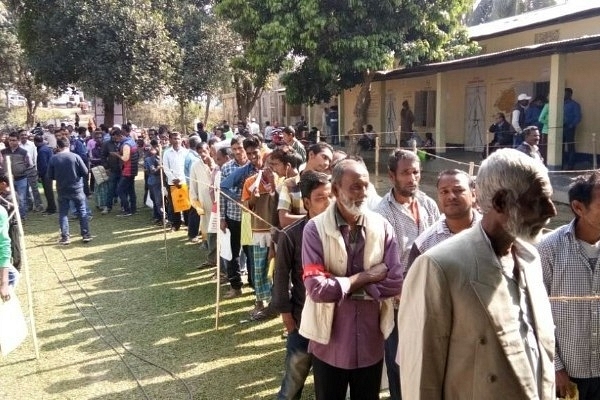Insta
Voters Excluded From NRC Will Not Be Listed ‘Doubtful’, Are Allowed To Vote: Election Commission Decides

Non-inclusion in NRC does not by itself mean one being declared as a foreigner. (NRC Updation Assam/Twitter)
The Election Commission (EC) said that the voters left out of the National Register Of Citizens (NRC) would not be put in the ‘doubtful’ list and could vote in the coming elections, reported The Indian Express.
A senior EC official told The Indian Express, “The Home Ministry’s clarification leaves little room for debate. There will be no suo motu deletion from the electoral roll based on the final NRC. Also, those excluded will not be marked as ‘D’ voters.”
‘Doubtful’ or ‘D’ voter list was introduced by the EC while revising Assam’s voter list in 1997. It categorised the registered voters in the state whose citizenship was under dispute, barring them from casting their vote.
Although the voters under the list continue to be on the electoral roll, they cannot vote in an election unless given a clean chit by a Foreigners’ Tribunal. There were approximately 1.2 lakh ‘D’ voters who did not vote in the 2019 Lok Sabha elections.
However, the poll body had allowed the people, who did not make it into the draft NRC list, to cast their vote in the general elections.
The final NRC list was published on 30 August, including about 3.11 crore as citizens and leaving over 19 lakh out of it. The poll body faced a dilemma on the voting rights of the ones excluded as to whether they should be marked as ‘Doubtful’ or not until the Foreigners’ Tribunal decides their fate over citizenship.
However, the Union Home Ministry, before the final list’s publication, had already clarified, “non-inclusion of a person’s name in NRC does not by itself amount to him/her being declared as a foreigner.”
Support Swarajya's 50 Ground Reports Project & Sponsor A Story
Every general election Swarajya does a 50 ground reports project.
Aimed only at serious readers and those who appreciate the nuances of political undercurrents, the project provides a sense of India's electoral landscape. As you know, these reports are produced after considerable investment of travel, time and effort on the ground.
This time too we've kicked off the project in style and have covered over 30 constituencies already. If you're someone who appreciates such work and have enjoyed our coverage please consider sponsoring a ground report for just Rs 2999 to Rs 19,999 - it goes a long way in helping us produce more quality reportage.
You can also back this project by becoming a subscriber for as little as Rs 999 - so do click on this links and choose a plan that suits you and back us.
Click below to contribute.
Latest